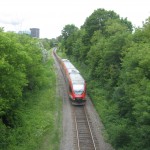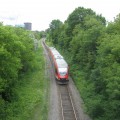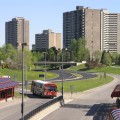Transportation demand forecasting – the process by which various network conditions are simulated and evaluated against future travel demands – is a cost-effective method of quickly assessing the impact of any project of variable scope. TRANS is committed to the continuous maintenance and development of a long-term transportation forecasting model whose purpose is to project present-day trip patterns and travel choices into the future. To request model projections, please complete a request for data.
Since its inception in the 1970s, the TRANS committee’s four-step regional transportation demand model (the TRANS model) has quickly become an essential tool in transportation planning in the National Capital Region (NCR). Especially in the case of high-visibility, large-scale projects that represent fundamental changes to the present-day transportation network, the TRANS model provides an opportunity to anticipate how such projects will accommodate future travel demand and affect mode shares and trip patterns.
The current TRANS model architecture was developed using the 2011 O-D survey results. The modelling region is composed of 26 districts, which are further subdivided into 701 traffic analysis zones (29 of which are external zones). Maintaining the current model structure, the TRANS committee strives to enhance and reimagine a comprehensive, robust, and modern TRANS model which is:
- capable of reproducing existing travel demand patterns;
- sensitive to the future land use, demographics and employment;
- sensitive to the implementation of various planning and transportation policies or visions;
- sensitive to the changes to transportation facilities and services; and
- able to produce quality information for project evaluation, by predicting the effects of any or all of the above onto travel demand and the use of the transportation infrastructure, including the assessment of economic benefits (e.g. variations in travel times and vehicle operating costs) and environmental impacts (e.g. energy consumption, pollutant emissions and green-house gases).
The complete TRANS model redevelopment report is available alongside some transportation demand studies, whose influences on model projections are carefully reviewed and used during validation. Additional modeling resources and model projections are also available to the public.



